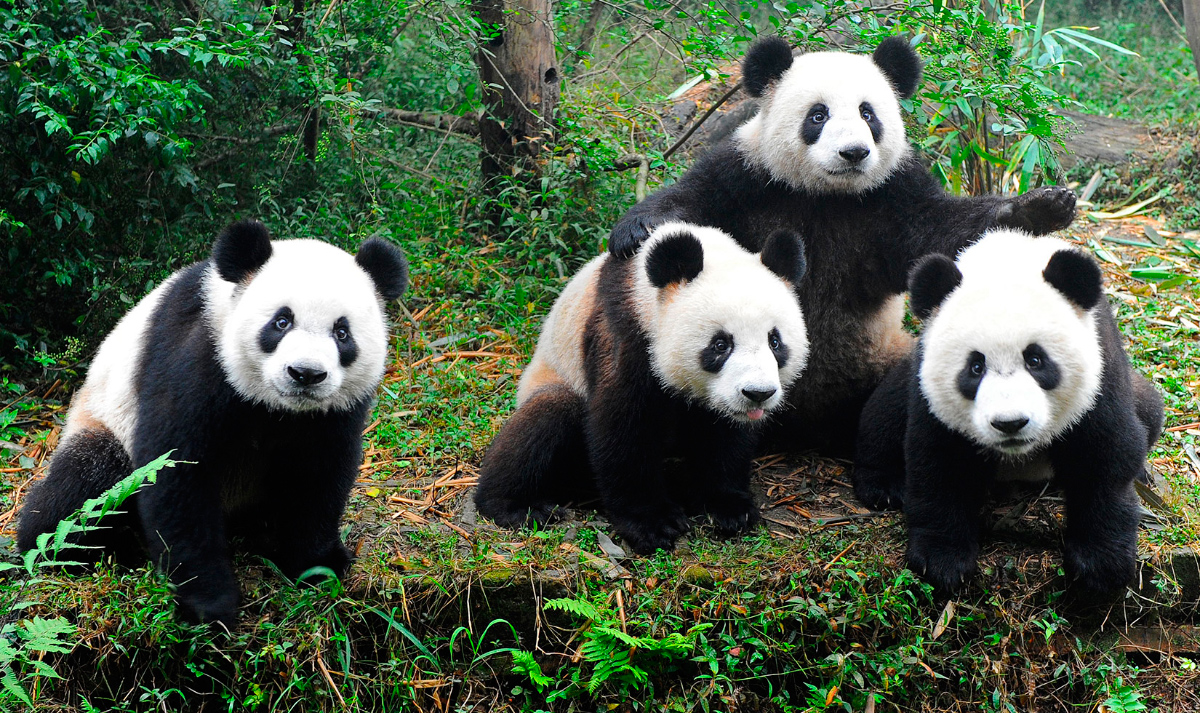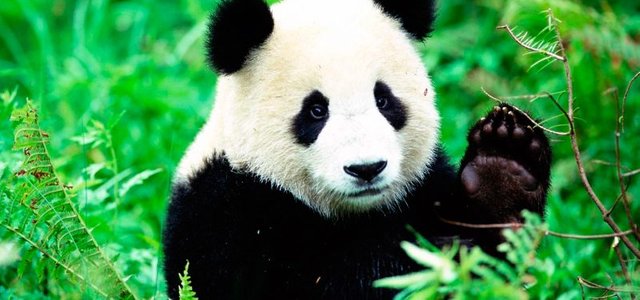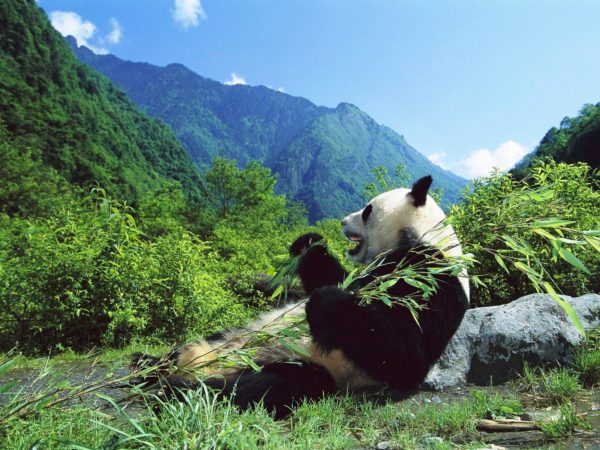Dream seeker Panda bear
Ailuropoda melanoleuca is the scientific name given to the panda, a specimen that is considered as a member of the Ursidae family, although it generates controversies in this regard.
The giant panda, as it is known, is indigenous to central China and has been identified as an endangered mammal. The populations of this animal are constantly checked in an attempt to guarantee its safety and increase the number of copies.
Currently, around 188 pandas are identified living in captivity and more than 1,600 in their natural habitat. Thus, the Sichuan Mountains and Tibet are the regions with the largest locations.
Origin and evolution of the panda
The origin of the panda, from the genetic point of view, is still not very clear. And is that until a few years ago the giant panda was classified as a member of the subfamily of ailurinos due to certain morphological features developed from their eating habits.
However, recent studies have shown that the panda is precisely a bear and that the similarities it presents with the red panda (subfamily ailúridos) are the result of sharing an environment, for which they had to look for mechanisms that led them to share similar traits.

Similarly, it is appropriate to clarify that the panda and red bear a common ancestor, which allowed the evolution of the ursids and the procyonids from evolutions conditioned by different latitudes.
The pandas do not stop surprising the scientists; one because despite being vulnerable they have adapted to survive to this day and two because new specimens break with the black and white coat scheme to show the combination of white, reddish and brown.
As it has been explained, this becomes a return to the features of the panda of the Pleistocene period, which, later on, had to adapt its colors to black and white as a way to camouflage itself in the glaciers.
Physical features
Their coat is thick, and helps them maintain a regulated body temperature, traits that become survival mechanisms because they help camouflage and scare enemies, the latter given by the appearance of his face.
A giant panda usually measures up to 95 cm in height at the withers and 1.5 m in body, with the head included; the tail measures 13 cm, while its weight is usually 160 kg.
The face of this mammal is one of the features that most differentiates it from the rest of the bears. And it is that this is usually flatter and with a smaller snout, similar to cats. Similarly, their jaws are similar to those of herbivores, which is related to their eating habits.
For its part, the hair of the pandas is not long but thick enough, woolly and abundant to protect it from the cold. The color of the coat is white, although as the bear ages it becomes yellowish; the black color is seen in the eyes, ears, legs, nose, feet and in the bands that wrap around the shoulders.
Due to its adaptations to eat bamboo, the panda has a prologue bone from the wrist that some identify as the panda's thumb or sixth finger, although it is not really a finger.

Feeding
The main attraction of the panda is bamboo, which forms dense forests in the natural habitat of this animal, so it hardly needs to be moved to obtain the amount of food it needs. On the other hand, in those places they are safe and little should fear the appearance of a predator.
In addition to bamboo, panda bears eat roots, eggs, bulbs, lily, as well as small rodents and tiny mammals. At this point, it is appropriate to clarify that this animal is carnivorous although due to changes in their habitat had to adapt drastically to survive from the ingestion of bamboo.
ough, in the pandas today, the typical food of a herbivore prevails, its digestive system is that of a carnivore. This situation makes their digestion capacity much lower than the authentic herbivores and those who maintain their carnivorous condition.

LEGS:
The panda's front legs are highly modified, with a unique structure, which has several names: panda's thumb, sesamoid, sixth finger, pseudo-thumb, etc. But it is not a small finger, but a small elongated bone of the wrist that is more developed. At the end there is a supplementary bearing that allows it to work as a finger opposable to the other five true, and which is ideal for grabbing, tearing and bringing bamboo leaves to the mouth.
CRANEO:
The skull of the panda is round and voluminous, especially because of the prominent and separated zygomatic arches.
EARS:
Large and rounded, but they stand out even more for their black color, which contrasts with the white base of the head.
NOSE:
Located at the end of a not very long white snout, and with the black tip to follow the overall pattern of coloration, the nose provides a fine nose, which the panda uses to detect possible predators and, above all, to guess the presence of their peers and recognize their movements and territories.
SKIN:
The skin of the panda is thick because it has a considerable layer of fat, whose function is not only to protect from the cold, but also from frequent cuts with the splinters of bamboo.
COLA:
With its 12-14 cm, it is always retracted, which gives it little relevance, under the tail it has odorous glands that it uses to mark the territory.
FEET:
The soles of the panda's feet are hairy and have claws with curved and steely nails, but not retractable.

Here I leave you some pages where you can find more of these beautiful animals, which are in danger of extinction.
http://www.bearlife.org/panda-bear.html
https://www.livescience.com/27335-giant-pandas.html
https://www.worldwildlife.org/species/giant-panda